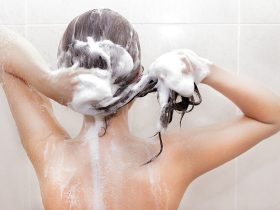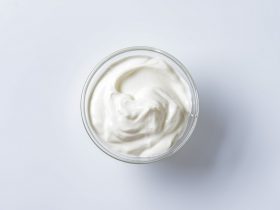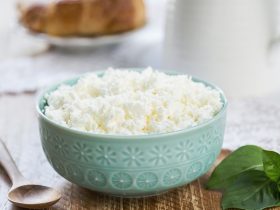As babies grow, breast milk offers important protection against disease and infection, which is not surprising considering its composition. It’s packed with nutrients, vitamins, and fat, including Immunoglobulin A (IgA), lauric acid, palmitic acid, oleic acid, and many more (Ramiro-Cortijo et al., 2020).
While breast milk has many qualities that makes it incredible when ingested for nutritional and immune system support, it can be used for more than just consumption.
Benefits of a Breast Milk Bath for Babies
There is a lot of anecdotal evidences that explore the use of breast milk to combat skin ailments and irritation that babies experience. Let’s explore these benefits further as they relate to bathing:
1. Treating Eczema, Cradle Cap, and Psoriasis
Atopic dermatitis or eczema is a type of skin inflammation that affects up to half of all infants during their first year of life. Breast milk was found to be equally effective as the medication Hydrocortisone 1% in treating mild to moderate atopic dermatitis (Kasrae et al., 2015).
Atopic eczema causes itchy, painful, swollen, and cracked skin. Many mothers swear by using a breast milk bath to help reduce the effects of eczema as well as psoriasis and cradle cap.
2. Clearing Acne
Infant acne may occur due to maternal hormones that reach the infant’s blood during pregnancy. A breast milk bath could help treat this condition.
Lauric acid, which is plentiful in breast milk, has antimicrobial properties that can help to fight against acne. It supports faster healing and keeps the area free of bacteria and infections. It may also help to reduce spots and discoloration of the skin.
3. Hydrating Dry Skin
All the acids described above (linoleic acid, palmitic acid, and oleic acid) are incredibly hydrating. Bathing a baby in breast milk could help to heal dry skin, lighten skin spots, and lessen inflammation.
4. Healing Minor Burns, Cuts, and Insect Bites
Because of its natural antiseptic properties, breast milk can be applied on a small cut to minimize burning and stinging. The IgA antibody found in breast milk prevents germs from forming on the wound and helps speed up the healing process.
5. Soothing Diaper Rash
Farahani et al. (2013) discovered that breast milk was just as effective as Hydrocortisone 1% for the treatment of diaper dermatitis. They found that improvement was seen on days 3 and 7 of treating diaper rash with breast milk.
How to Make a Breast Milk Bath
It’s relatively easy to make a breast milk bath. You will need:
- Warm water
- Baby wash
- 6-10 oz. of breast milk
- Put lukewarm water in the tub.
- Add 6-10 oz. of breast milk to warm water.
- Soak for 5 to 15 minutes.
- Apply the breast milk-laden water over the baby’s arms, ears, and limbs. If necessary, pour over the head and wash the face with it.
- Remove the baby from the tub and pat dry.
- Use moisturizers.
- Dress baby in cool, light fabrics that allow the skin to breathe.
Other Purported Uses for Breast Milk
Soothing Teething Pain
In order to soothe teething pain, put some of your expressed breast milk into popsicle shells and freeze it. When your little one is crying from teething pain, give them a milk popsicle (usually called “momsicles”) for a quick and nutritional soothing experience.
Treating Ear Infections
Breast milk could be used as a home remedy for ear infections, which occur most commonly between the ages of 6 and 18 months. Breast milk has high levels of IgA antibodies. Adding a few drops of breast milk to the infected ear every few hours will help clear the infection. Consult your doctor if the infection remains after 24 to 48 hours.
Clearing Blocked Tear Ducts
Babies’ eyes can be affected by clogged tear ducts. Symptoms include excessive tearing, crusting, or swelling in the inner corner of the eye. Breast milk may be used as a home remedy for this stressful condition.
Apply 2 drops of breast milk to the affected eye after washing with water. This will allow the tear duct to get unclogged in 1 to 2 days. Ensure you consult your pediatrician if this condition persists.
Alleviating Sore Nipples
Chapped, sore nipples are common problems in the early days of breastfeeding. There are plenty of creams and antibiotic ointments for this particular problem. But many mothers, midwives, and lactation counselors still swear by breast milk to help alleviate this painful condition.
Read More: Other Uses for Human Breast Milk (HBM)
Summary
Breast milk is high in vitamins, minerals, and fats, and has a number of benefits. Apart from feeding, breast milk can also be used for bathing your babies.
A breast milk bath has a number of benefits, including battling acne, moisturizing dry skin, and healing minor cuts. Likewise, a breast milk bath can be used to treat painful skin conditions, such as eczema, psoriasis, cradle cap, and diaper rash.
Though anecdotally effective, breast milk bath should be used as complementary treatment to these conditions. Don’t forget to tell your physician if your baby suffers from any of these ailments.
References
- Ramiro-Cortijo, D., Singh, P., Liu, Y., Medina-Morales, E., Yakah, W., Freedman, S., & Martin, C. (2020). Breast milk lipids and fatty acids in regulating neonatal intestinal development and protecting against intestinal injury. Nutrients 12, 534. doi:10.3390/nu12020534
- Kasrae, H., Farahani, L. A., & Yousefi, P. (2015). Efficacy of topical application of human breast milk on atopic eczema healing among infants: A randomized clinical trial. International Journal of Dermatology 54(8), 966-971. doi: 10.1111/ijd.12764.
- Farahani, L., Ghobadzadeh, M., & Yousefi, P. (2013). Comparison of the effect of human milk and topical hydrocortisone 1% on diaper dermatitis. Pediatric Dermatology (30)6. https://doi.org/10.1111/pde.12118




